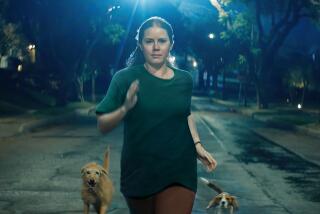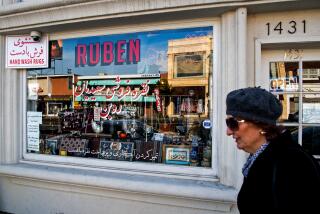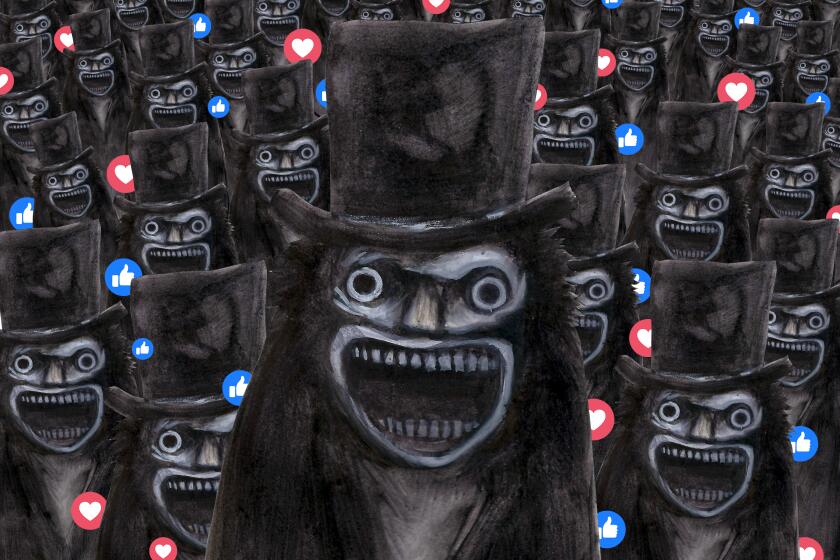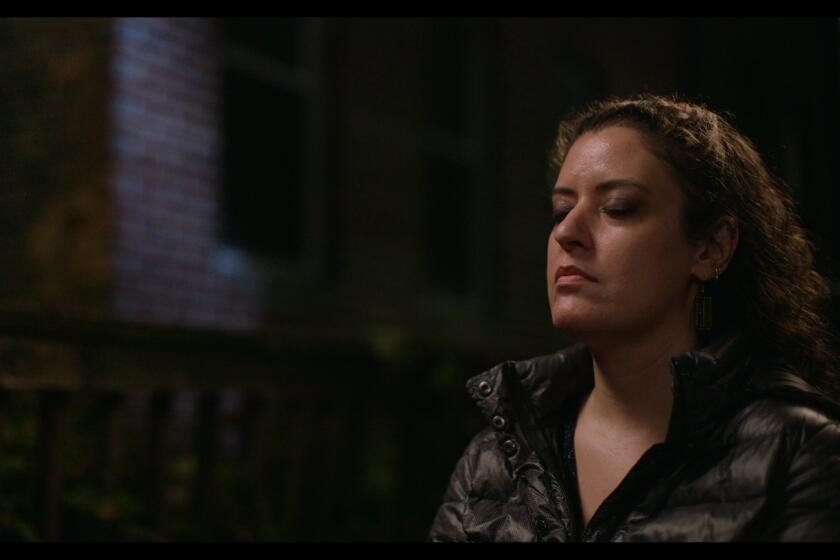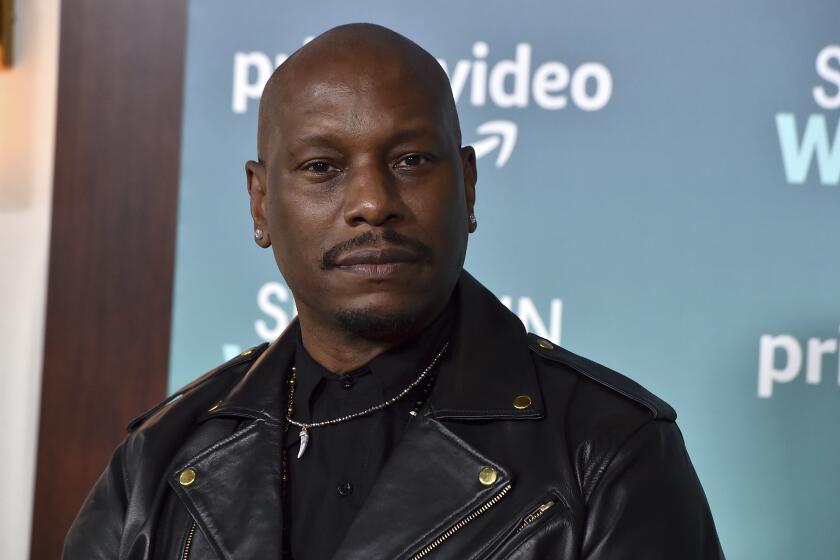Sundance 2014: At ground zero for U.S. film, a Persian wave
The teenage girl Sepideh only wants to look at the stars.
A student of astronomy and worshipful devotee of Albert Einstein, she dreams of joining the young men who trek out nightly in the desert south of Tehran to gaze at constellations. But such ambitions worry Sepideh’s traditionalist Iranian family members, who issue her ominous warnings -- which, of course, only further fuels her desire.
“We use the sky,” Sepideh says in a new Farsi-language documentary, also named “Sepideh,” that premieres Friday at the Sundance Film Festival, “to vent the frustration that society has given us.”
Sundance, which kicks off its 30th edition Thursday in the mountains of Utah, is largely known for unearthing new domestic voices. Modern indie (and quintessentially American) hits such as “Beasts of the Southern Wild” and “Winter’s Bone” were discovered there in the last few years, and over its history the confab has been the launchpad of filmmakers including Steven Soderbergh, Michael Moore and David O. Russell.
PHOTOS: Sundance Film Festival 2014 | The Scene | FULL COVERAGE: Sundance 2014
But at this year’s edition all of that comes with a twist: Some of the most notable entries are from and about Iran.
“Sepideh,” from the Danish-by-birth, Iranian-by-marriage documentarian Berit Madsen, explores a young girl’s clash with parental expectation that, though intimately told, is emblematic of a larger generational struggle in the country.
Also premiering is “Appropriate Behavior,” a kind of lesbian Iranian American “Girls” written, starring and directed by the tart young Brooklyn-based filmmaker Desiree Akhavan, who had previously become something of a viral sensation for her semi-autobiographical Web series “The Slope.”
And in “A Girl Walks Home Alone at Night,” the Los Angeles-based Iranian American director Ana Lily Amirpour investigates themes of Iranian female outsiderness and empowerment in the garb of what might be a cinematic genre first: the black-and-white Farsi-language western vampire movie.
That’s in addition to a short titled “More than Two Hours,” a drama from the Iranian Ali Asgari about a young woman and her male companion in a series of Iranian hospitals, as well as a pair of Iranian filmmakers currently in the Sundance Institute’s Lab program who are preparing to shoot the feature they developed at the Utah nonprofit, titled “Avalanche,” in their home country.
At a time when Iran dominates the headlines with diplomatic and political news, these films, their creators say, offer a more accurate glimpse at the experience of Iranians both in the Middle East and abroad. And increasingly the filmmakers, young and often female, come with both a complex post-Revolution story and the urge to tell it.
LIST OF SUNDANCE SELECTIONS: U.S. and World Cinema dramatic competition
“There’s a sense that we Iranians and Iranian Americans who were raised after the Revolution are coming of age and hitting our stride,” Akhavan, 29, said. “You had a previous generation of people like Kiarostami and Panahi,” she said alluding to some of the country’s best-known post-Revolution directors. “And now you have us.”
Raised in the northern suburbs of New York City by parents who fled after the Shah was overthrown in 1979, Akhavan said she was sometimes caught between her family’s conservatism and her American education (she attended New York University film school) and cultural exposure (she watched a lot of “The Brady Bunch” and Mel Brooks). That tension intensified when she came out as bisexual.
Akhavan channeled the conflict into the new dramatic comedy, which examines her character Shirin’s relationship with another woman both as it flowers and falls apart, in a movie that might be described as a Sapphic “Annie Hall” with a dose of intergenerational Iranian tension. When Shirin finally tells her mother she is in love with a woman, the traditionalist older woman says “No, you’re not” and coolly goes about her business.
“I love my mom, but that was pretty much how she reacted,” Akhavan said, laughing. “It’s so Iranian.”
Amirpour -- whose parents also fled Iran in the 1970s and who grew up in Bakersfield’s small Persian community before attending UCLA -- was motivated to make her edgy black-and-white vampire western, which is filled with pimps and hustlers, not only to mash up genres but also to mix and match her own background.
PHOTOS: Winter movie sneaks 2014
“I think it’s political and it’s not political,” said the director, who shot the movie in a ghost town outside Bakersfield using Iranian musicians and a mix of Iranian, European and American actors. “I wanted to make a film that’s as much about David Lynch or ‘Gummo’ as anything in Iran. But those ideas are in there.”
Set in the mythical “Bad City” of Iran, “Girl Walks Home” is laden with metaphor. Most pointedly, its main character, a young female vampire (Sheila Vand), is dressed in a chador. While Amirpour said she sees the religious garment as a “symbol of power more than anything else,” she can understand others’ anti-religious interpretations of the movie, and worries that her parents will not be able to return to Iran after the film debuts at Sundance.
Indeed, back in Iran, that struggle between free expression and restrictive norms is on display in Madsen’s “Sepideh,” where even something as benign as stargazing is a quiet act of rebellion. “Those who’ve learned to cook, what have they become?” is a seemingly harmless teenage ambivalence that, when uttered by its main character in a charged context, becomes a statement of political defiance.
“Sepideh is not a revolutionary in the streets of Tehran, but in a way that takes more guts, because she’s altering perspectives from the inside,” Madsen said by phone from Denmark.
To make the movie, which took four years to shoot, permits were carefully secured and the camera unobtrusively placed, as a girl quietly pushes back at societal expectation. Still, Madsen said there were moments where the intelligence agencies followed her and the production to make sure the film stayed away from explicitly political subjects. (Incidentally, shooting movies in Iran, where Panahi remains under a ban and direct critiques are generally verboten, is tricky, which in a way further motivates Iranian-Americans to tell their stories.)
PHOTOS: Box office top 10 of 2013
These movies are coming about, say experts, as part of an important groundswell.
“My intuition tells me that, like Romania in the middle of the last decade and Chile over the last four or five years, this is a bona fide wave,” said John Nein, a senior programmer at the Sundance Film Festival. “It’s still in the early stages. But you have a generation that has a lot to say. Something very exciting is brewing.”
That’s amplified by the fact that, unlike the surge in other countries, Iran has a strong diaspora that allows for a widening range of potential stories--and in the number of people able to tell them. Some in film circles have even taken to dubbing a “Tehrangeles New Wave” and say it began unofficially at Sundance 2011 with “Circumstance,” Maryam Keshavarz’s movie about homosexuality in Iran. These new films also come just two years after an Iranian film won the foreign-language Oscar for the first time, Asghar Farhadi’s “A Separation.” (Needless to say, the depictions are different from the Persian-themed cable-reality show “Shahs of Sunset” and its outsized personalities.)
Amirpour wonders if this generation of filmmakers is taking the push from Type A immigrant Iranian parents -- who she says “usually want us to become doctors and lawyers and anything that’s more stable than what they came from” -- and turning it into something more artistic.
Like a lot of culture that starts at the margins, the Sundance Film Festival can be a barometer for a larger movement. With its abundance of liberal, internationally focused young female creators, the Iranian wave seems to be expressing just that.
But these filmmakers are hardly eat-your-vegetables social activists. Most of these new tales are using more fun lenses, like romantic comedy or genre mash--which, their authors say, is just fine by them.
“I think we’re all tired of these stories that just say how hard it is to be Iranian,” Aklhavan said. “Let’s show the problems. But let’s also have some fun.”
ALSO:
Iranian filmmaking at two extremes
Shelton, Corbijn, Gibney lead Sundance premieres
Doing whatever it takes for a spot at the Sundance Film Festival
Follow me on Twitter @ZeitchikLAT
More to Read
Only good movies
Get the Indie Focus newsletter, Mark Olsen's weekly guide to the world of cinema.
You may occasionally receive promotional content from the Los Angeles Times.
